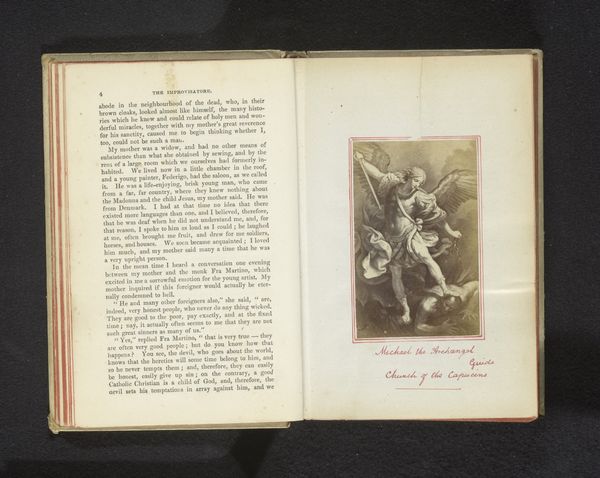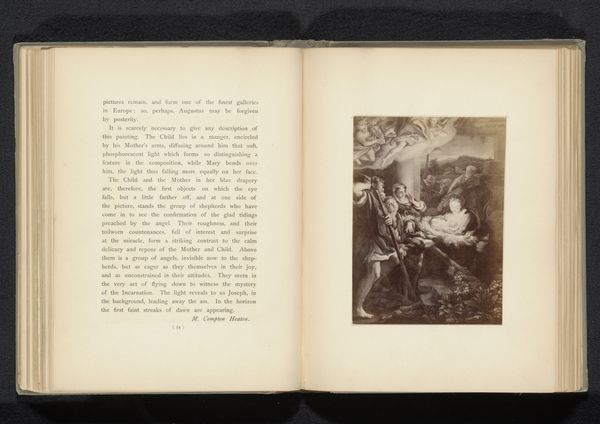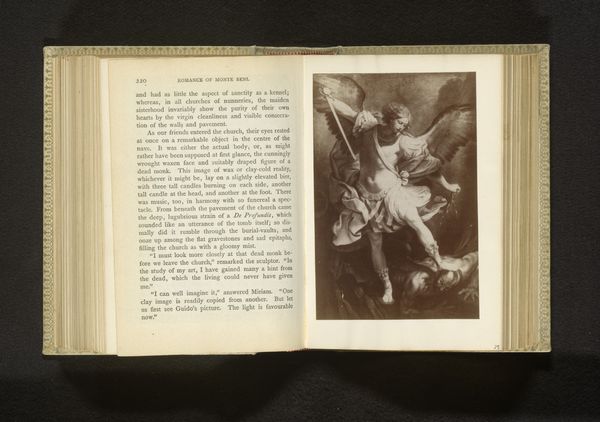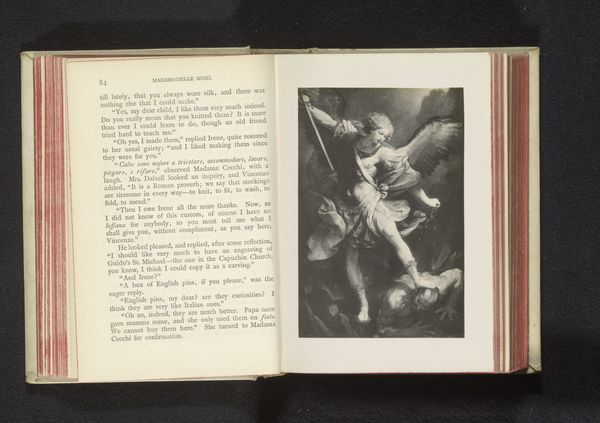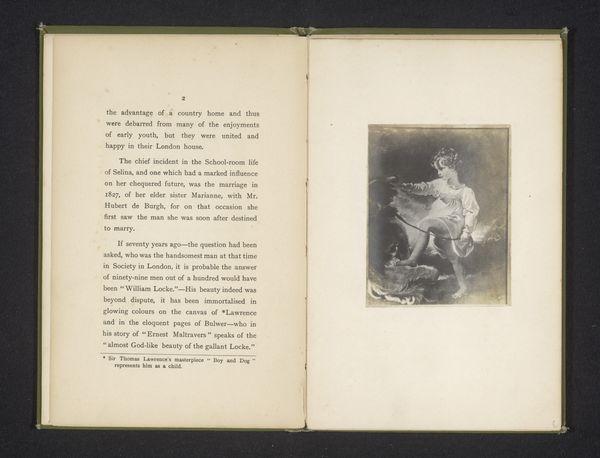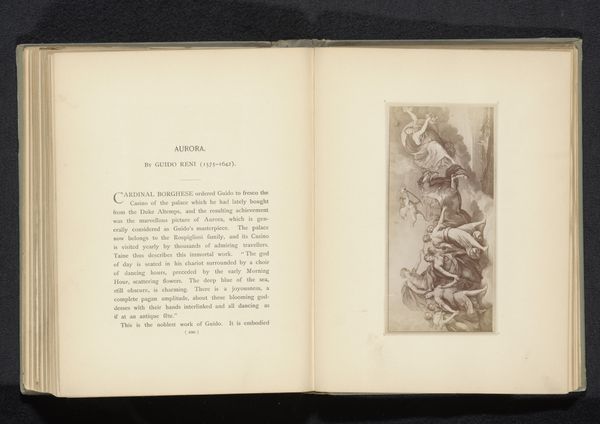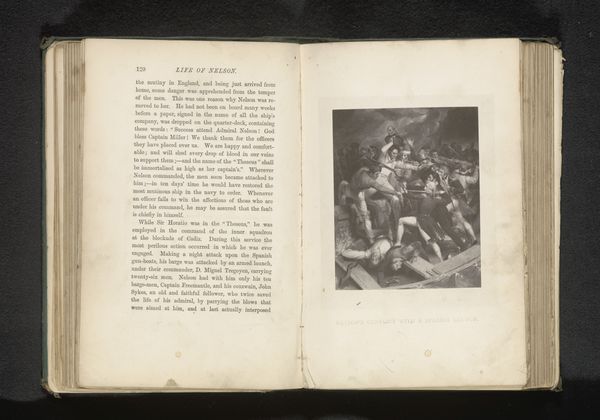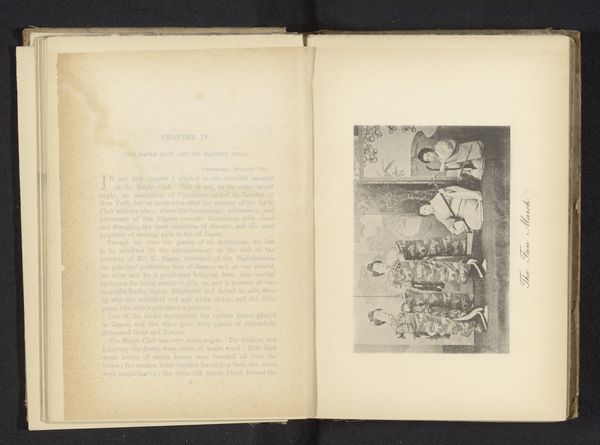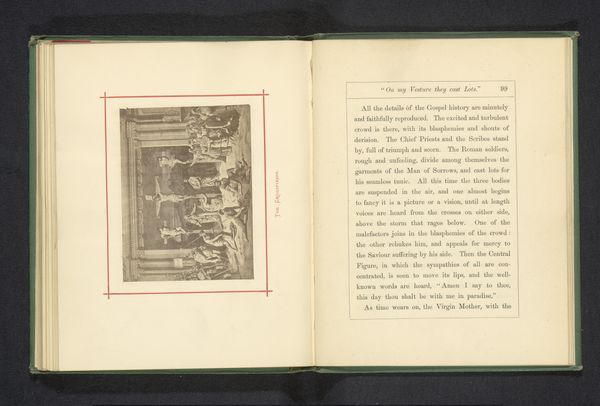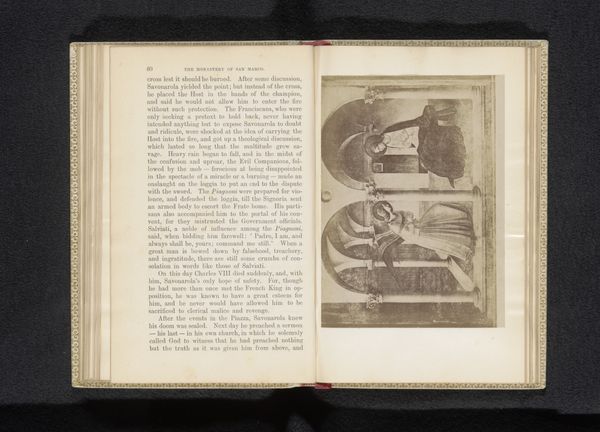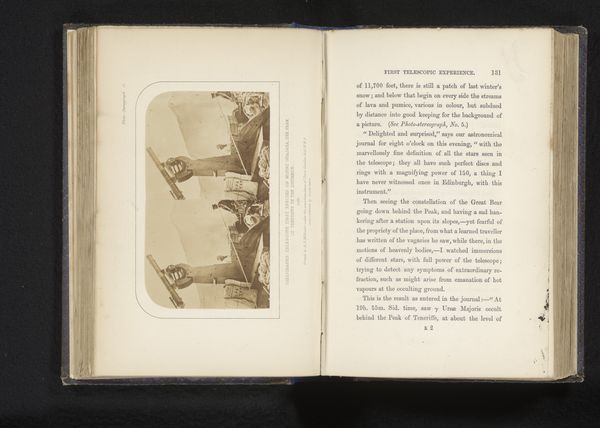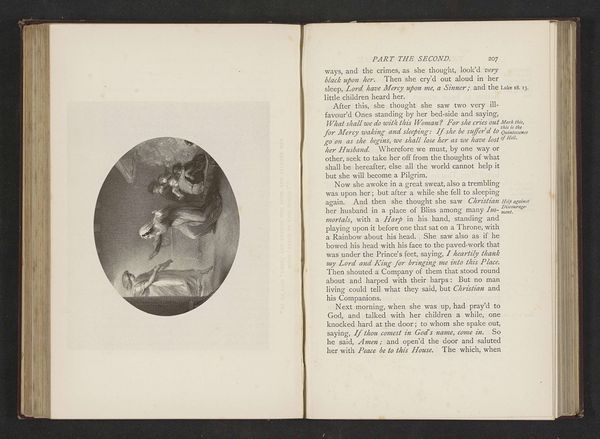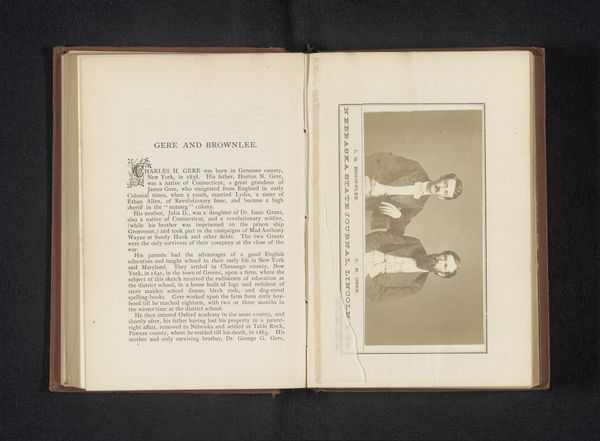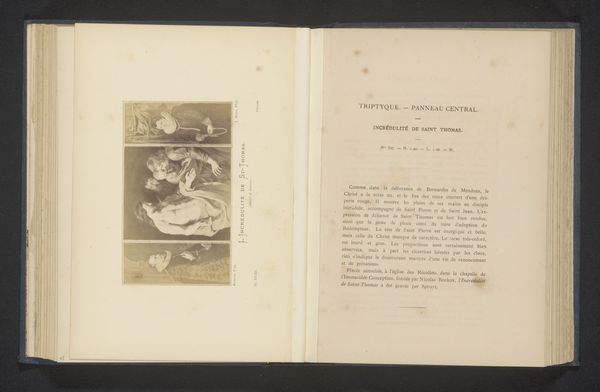
Fotoreproductie van een schilderij van de aartsengel Michael door Guido Reni before 1860
0:00
0:00
Dimensions: height 90 mm, width 63 mm
Copyright: Rijks Museum: Open Domain
Editor: Here we have what is called "Fotoreproductie van een schilderij van de aartsengel Michael door Guido Reni," a photograph, specifically a gelatin-silver print, dating from before 1860. It appears to be an image within an open book. The picture itself has Baroque style, but what is especially compelling to me is the layered effect that combines printed text and an image of a painting on aged paper. What catches your eye, and how do you interpret this combination of media? Curator: It's fascinating how photography is used here, not as a primary artwork, but as a reproduction. This touches on issues of accessibility and the democratization of art. Guido Reni’s original painting, steeped in Baroque aesthetics and religious symbolism, was likely only available to a privileged few. But this photograph, reproduced in a book, made the image more widely available, shifting its cultural meaning. How does the context change the understanding of power? Does the photographic reproduction challenge the authority of the original artwork, or does it reinforce it by making it accessible? Editor: That's a great point! It's easy to overlook the radical implications of photographic reproduction. The book presents the photograph alongside text...so the image becomes enmeshed with narrative. Curator: Exactly! And who is this narrative serving? What societal values does the book propagate? Considering the date, pre-1860, and the religious subject matter, this reproduction likely functioned as a tool for reinforcing religious ideology and social order. The figure of Michael defeating the devil reinforces a binary view of good versus evil, one that might have been used to justify various forms of oppression or exclusion. Editor: So, beyond aesthetic appreciation, this image opens up a discussion about the social function of art and how reproductions mediate our understanding of power dynamics. That’s insightful. Curator: Precisely! And it compels us to question how images are always embedded within larger cultural narratives. That is what art should do: force the questions society fears the most.
Comments
No comments
Be the first to comment and join the conversation on the ultimate creative platform.
